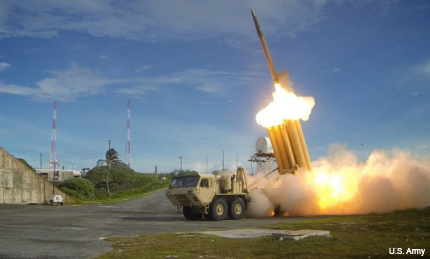Army looks to 'transform the force' with integrated missile defense
The IBCS effort would replace seven C2 systems with a single interface, allowing for an "any sensor, best shooter" approach.

The military services are looking to improve their air and missile defense systems in the same way they can shore up their communications infrastructure—by integrating networks and providing a single user interface for all the services in an open architecture that accommodates the range of current, and future, sensors, launchers and missiles.
The disparate nature of air and missile defense, or AMD, systems threatens to leave U.S. forces at a disadvantage as adversaries develop their own, integrated ballistic and cruise missile systems, missile defense experts said during a recent Association of the U.S. Army panel in Washington. The primary reason: "inflexible, stove-piped command and control systems," Brig. Gen. Christopher L. Spillman, commandant of the Army Air Defense Artillery School, said in an Army release.
Each of the military services currently has its own architecture for AMD, and those differences can prevent U.S. forces from fully engaging an enemy, particularly in the case of a large-scale assault, and can also contribute to errors such as friendly fire incidents.
The Army has been working to correct the problem with an effort called Integrated Air and Missile Defense - Battle Command System, or IBCS, working with industry to develop modular, non-proprietary network capabilities using an open architecture and current industry standards, officials said. The plan is to provide a common interface for all systems in a standardized architecture that accommodates rapid development and future upgrades. Among those upgrades would be future weapons systems such as lasers.
When complete, IBCS will give air and missile defense "a flexibility that doesn't exist today,” Spillman said. “It will transform the force."
The Army in 2010 awarded a Northrop Grumman-led team a $577 million contract to get started on IBCS, according to Defense News. With a targeted initial operating capability of 2018, IBCS is intended to integrate the Patriot, the Surface-Launched Advanced Medium Range Air-to-Air Missile, Joint Land Attack Cruise Missile Defense Elevated Netted Sensor, Improved Sentinel radar, and the Terminal High Altitude Area Defense and Medium Extended Air Defense System, Defense News reported. Tests are being conducted at White Sands Missile Defense Range, New Mexico.
By integrating not just the basic routing, relay and server components of the network, but also standardizing the sensors, radars and launchers, the services expect to share a single, ubiquitous view of the battlespace—whether from land or sea—and allow an “any sensor, best shooter” approach to missile defense, according to Northrop Grumman.
IBCS will replace sever command and control systems currently in use, in the process reducing the single points of failure and providing the flexibility to deploy smaller forces, the company said.
As tests continue and IBCS gets closer to operational capability, Spillman said, the Army also will focus on a strategy got training soldiers to use the new system. That could involve something of a logistical challenge, since 58 percent of the AMD force is either forward-deployed or forward-stationed, he said.